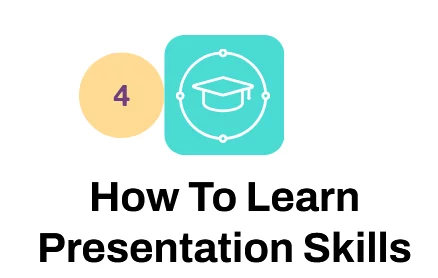
Stories That Sell – How To Use Storytelling
Contents
Behind every memorable presentation is a story well told.
Storytelling is how humans have passed down knowledge, inspired change, and influenced action for generations.
In business presentations, a well-placed story doesn’t just inform, it persuades, connects, and sells.
Over the years, I’ve watched technical presentations become transformative, simply because someone chose to lead with a story.
Here’s how to harness storytelling to elevate your message.
1. Start With A Real Moment
The most powerful stories often come from simple, lived experiences.
Whether it’s a customer interaction, a professional challenge, or an unexpected insight, authentic moments build emotional connection.
Real stories cut through abstraction and help people feel something, and emotion is the foundation of persuasion.
Why It Matters:
Authentic stories create emotional resonance and build trust quickly.
What To Share:
-
A customer success (or failure) story.
-
A personal challenge and the lesson learned.
-
A surprising insight that changed your perspective.
-
Pro Tip: The best stories aren’t always dramatic. They’re relatable.
2. Use Classic Story Structure
Even the most compelling anecdotes fall flat without structure.
A clear beginning, middle, and end gives your story shape and makes it easier for your audience to follow.
Structure builds momentum and ensures you don’t lose your message in the details.
It also mirrors how our brains are wired to process and remember information.
If you are having trouble, our presentation skills courses will help you craft the classic story structure from your presentation!
Why It Matters:
A clear arc keeps your audience engaged and makes your message stick.
The Basic Framework:
-
Beginning: Set the scene: Who? Where? When?
-
Middle: Introduce the challenge or conflict.
-
End: Resolve the conflict and reveal the lesson or takeaway.
-
Pro Insight: Stick to one central message per story to avoid dilution.
3. Make It Personal, Not Private
A personal story draws people in, it signals authenticity.
But oversharing can be distracting or make people uncomfortable.
The goal is to be relatable, not confessional.
Use stories that reveal something meaningful while still being relevant and professional.
Think about what your audience needs, not just what you want to share.
Why It Matters:
Vulnerability builds credibility, but oversharing can alienate.
Share Wisely:
-
Choose moments that reflect shared human experiences.
-
Focus on what your audience can learn or relate to.
-
Frame your story around their needs, not just your journey.
4. Tie Stories To Your Message
A great story without a point is just a detour.
To make your story persuasive, you need to link it directly to the takeaway you want the audience to remember.
Stories become powerful when they serve your larger message, helping people grasp ideas more deeply and emotionally.
Why It Matters:
A story without a point is just entertainment. Storytelling should reinforce your core message.
How To Anchor It:
-
Ask, “What does this story help me explain?”
-
Use the story as a bridge to data, decisions, or actions.
-
Reinforce your key takeaway at the story’s end.
5. Create Sensory Detail
Details make a story vivid.
When you engage the senses, you activate the audience’s imagination, and they feel like they’re there with you.
Instead of telling them something was “intense” or “busy,” show them through sights, sounds, and feelings.
The more sensory cues you add, the more immersive and memorable the experience becomes.
You can even use a visual to show your audience exactly what you mean.
Why It Matters:
Vivid details activate imagination. They bring your story to life.
Include:
-
Sensory cues (What did it feel/sound/smell like?).
-
Visual elements (colours, settings, expressions).
-
Specifics over generalities.
-
Example: Instead of “It was a busy day,” say “Phones were buzzing, and coffee cups stacked in corners.”
6. Deliver With Emotion
Even the best-written story loses impact if delivered flatly.
Your tone, pacing, and expression should reflect the emotion and arc of the story.
Let the story live through your delivery, your voice should rise with tension and soften with resolution.
This emotional mirroring keeps your audience engaged and connected.
Why It Matters:
How you tell the story matters as much as the story itself.
To Elevate Your Delivery:
-
Use vocal variety to emphasize key moments.
-
Pause for dramatic effect.
-
Show emotion, let your facial expressions and tone match the story’s arc.
7. End With The Audience In Mind
The best stories don’t just entertain, they transform.
Your ending should point the audience toward action, change, or reflection.
Leave them with something they can apply or feel compelled to think about.
It’s this final impression that determines whether your story truly sticks.
Why It Matters:
Great stories change people. A strong close leaves your message lingering.
How To End:
-
Reflect the transformation back to your audience.
-
Ask a question or issue a challenge.
-
Make the lesson actionable.
Pro Tip: With a virtual audience, people’s attention can be all over the place. Your ending is incredibly important to reel them back in.
Final Thoughts
Storytelling isn’t fluff, it’s function.
It’s not a detour from your data; it’s the bridge to understanding it.
When used with purpose, stories can move hearts, shift thinking, and drive decisions.
Master the art of story, and your presentations won’t just deliver information, they’ll inspire action.
- Facebook: https://www.facebook.com/profile.php?id=100066814899655
- X (Twitter): https://twitter.com/AcuityTraining
- LinkedIn: https://www.linkedin.com/company/acuity-training/









